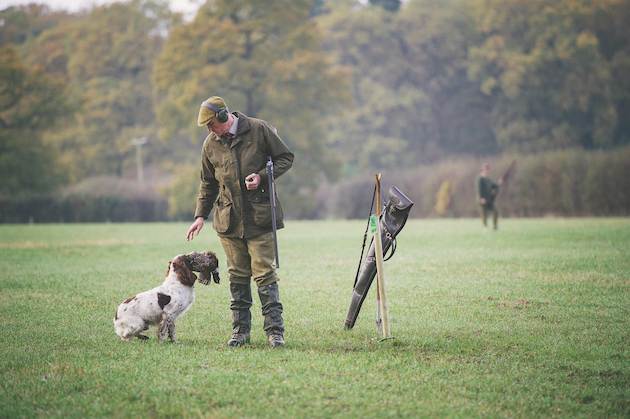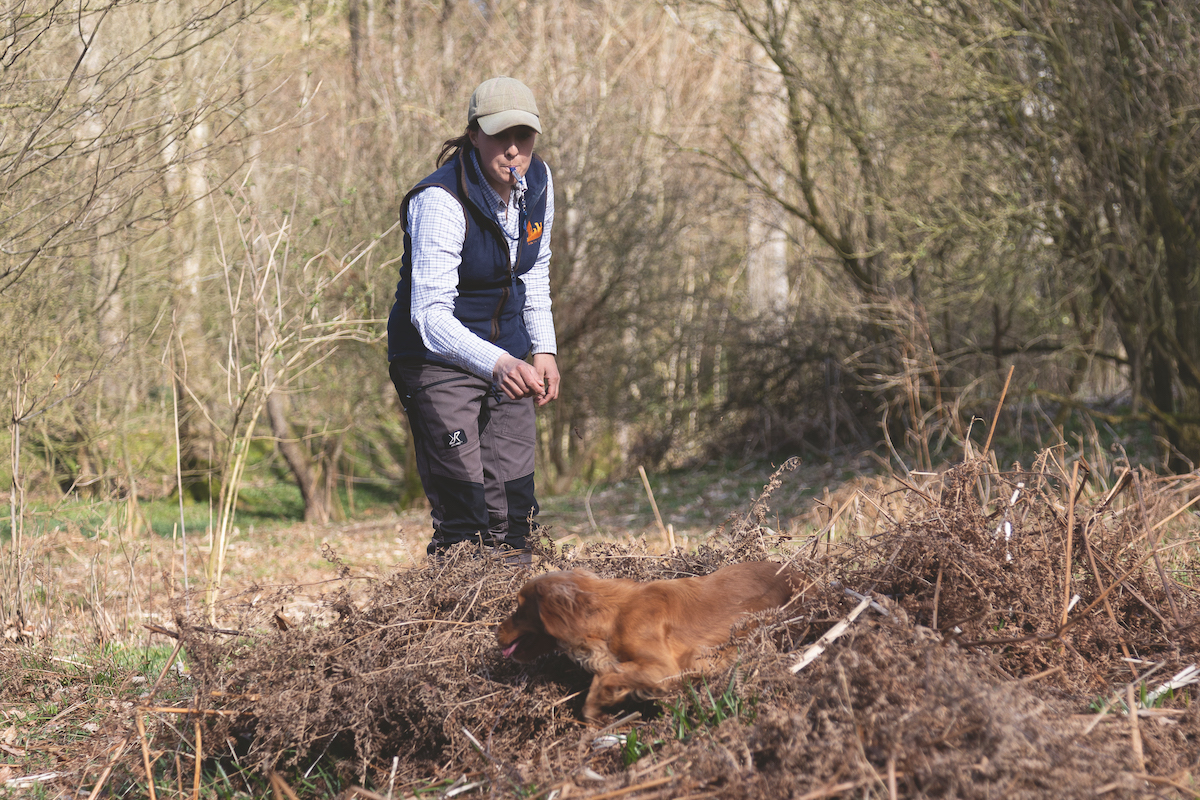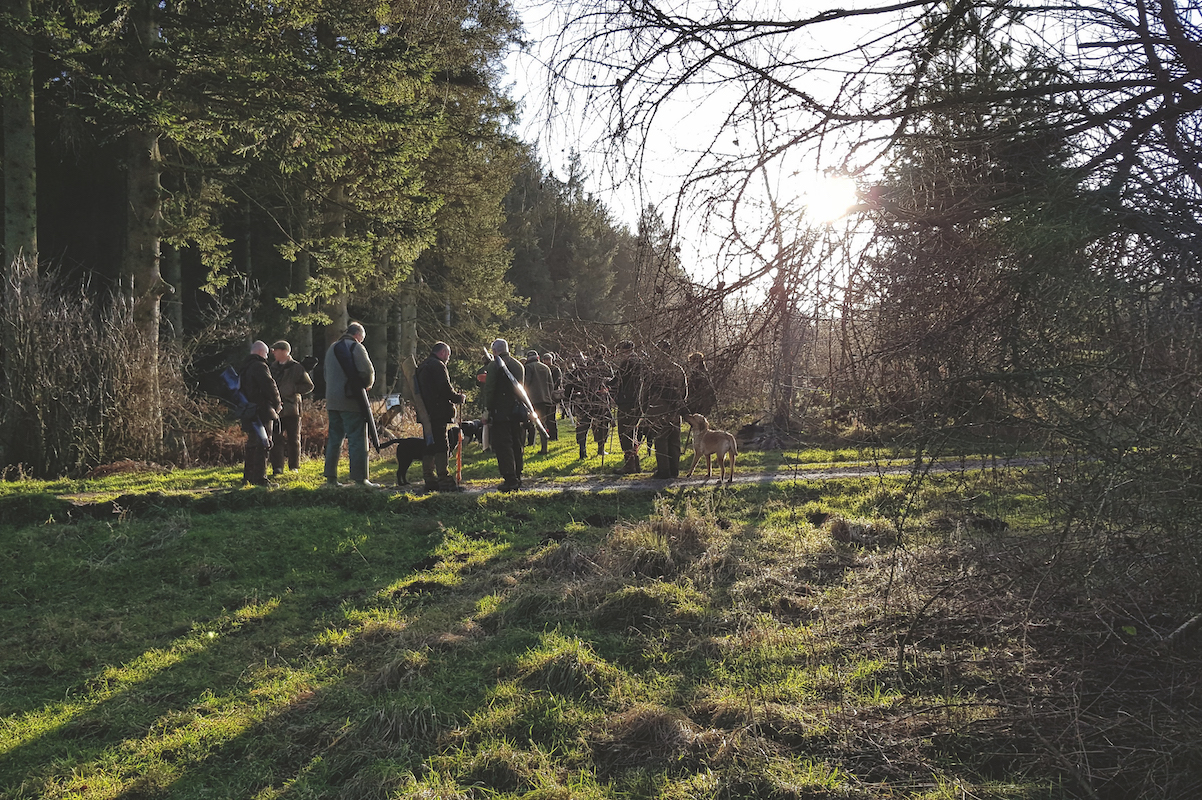Professional gundog training – when is it best to leave it to the experts?
There is joy in training a dog, but in some cases it is best — for both the owner and dog — to seek help, says Ellena Swift

A well trained gundog is a joy
There are many ways to train a dog. You can opt for professional gundog training but the most common is to train the dog yourself. This is a strongly supported and often preferred method, and it certainly has its merits. First, there is no greater feeling than taking your own dog — into whose training you have poured hours of hard work, often sweat and even tears — to a shoot and seeing it succeed in the job it has been trained for.
I will never forget the first time my German shepherd bitch sat on the peg with me. I managed to kill one cock bird that dropped 40 yards behind. I waited until the drive had finished, put my gun in its slip and sent my dog. She was quiet, steady as a rock and retrieved my bird to hand like an old pro. It was wonderful. The first time your dog flushes a bird and remains steady in the beating line while under the watchful eye of the keeper makes for a very proud owner.
The bond you build with the dog is hugely important. During the time of training and then working them, you become used to and able to recognise their behaviours, quirks, preferences and habits. For example, I find it easy to recognise when one of my dogs has winded a bird. I find it easier than anyone else to know when they have picked up the scent. This only comes with time and practice. I also realise quicker than anyone else when my dogs are either confused or about to start ignoring me.
This means that a lot of the time, the owner is the best person to handle and train the dog. This approach also helps to keep things clear in the dog’s mind: one trainer, one handler and one partner to work with. When they are working, I want my dogs to ignore everyone else and be focused on me.

There is no greater feeling than when your dog succeeds in the job you’ve trained it for
Always learning
Another huge benefit of training your own dog is that you should improve as a handler and trainer. Most dogs are a true product of their training. Nature and genetics do have an influence, but the vast majority of the dog’s behaviour will come down to nurture. Any experienced handler will admit that they learn something new with every dog they train, and most dogs will throw up new challenges that they have to adapt to. This makes them more proficient handlers and trainers. You only have to look at the best professional gundog training experts in the country. Those at the very top of their game are rarely young. Dog training is not something that can be learned on paper or simply by watching. It can only be learned by doing. The top trainers have at least 20 years’ experience under their belt. They will have trained, handled and run hundreds of dogs, if not thousands, and demonstrated their skill again and again by getting the very best out of them.
When running group lessons, I can usually tell very quickly which trainers are going to flourish and which will struggle. Those who struggle are normally the handlers who insist it is the dog that needs training and not themselves. The handlers who embrace the change and are willing to try new techniques, and work hard on improving themselves as well as their dogs, are the ones who will succeed.

Like any other sport, dog training comes more naturally to some people than others
Harsh reality
The harsh reality, which many struggle to accept, is that dog training is a sport like any other. The skills, patience and abilities it requires are not to be scoffed at. And, like any other sport, some are more natural at it than others. It is easy to see from an early age when a person has a natural aptitude for a sport. There are videos of athletes as children that prove this. Tiger Woods, for example, can be seen at two years old driving a ball better than most adults. Those who find dog handling and training easy will almost certainly excel over others. Success tends to breed success, and they will often make training look frustratingly easy to others.
When professional gundog training is needed
But what are the options for those to whom dog training does not come naturally? One possibility is sending a dog away for professional gundog training. This may seem like an extreme option to some. The odd thing is that guide dogs and assistance dogs are nearly always trained by someone else, then the new owner is trained how to handle the dog. In the army or police, again, they often have the main trainers who do the bulk of the training. The new handlers are then taught how to handle their dogs. So why do the gundog fraternity find the idea of sending a dog away for training so strange? Primarily, it is because they feel a gundog should be a family pet as well as a working dog. They believe that the dog would be unhappy without its family. While there is some merit to that, any decent residential trainer will recognise that a happy dog trains better. A dog that has a bond with the trainer will improve and learn faster than one that is stressed. Dogs adapt quickly and easily if treated correctly.
What you should know about slip leads and how to use them correctly
Placing a slip lead on a dog correctly and how to buy the right size
How do you train gundog puppies?
I’m about to start training mine to pick-up.
Element of control
The nice thing with this option is that the owner retains an element of control, as they often choose the puppy. At a certain age, the puppy is sent away for a set amount of time to be trained. Some handlers require the dog to be fully trained, in which case the dog will be away for at least 15 months, depending on how old it was when it was sent6 away. Others are content with the basics and the dog being part-trained. Admitting that we need help — with anything — has never been easy. So, for those who need help with training a gundog, it is often best to opt for professional gundog training.
Sometimes, the damage that can be caused by an inexperienced or incapable handler is extremely difficult to correct or even irreversible. So there are many circumstances when I believe that, for the dog’s sake, it is a good idea to have it trained correctly.

A dog that has a bond with the trainer will improve faster than one that is stressed
Lack of time
A good number of dog owners lack the time to properly train their dogs. They enjoy their country pursuits and working their dogs, but training requires time and commitment and a lot of working people do not have any to spare. Many of my clients work in high-pressured jobs so, for them, sending the dog away for training is the most sensible option. The financial outlay is a consideration, as it is not cheap to have a dog trained residentially. But if the outcome is a controlled, trained dog and a happy owner, it is certainly the right way forward. I have dealt with clients combining lessons and residential training, and I am very supportive of both options. There are times when I can see that a dog would do much better with a professional trainer with the handler being brought in at a later date. Then there are the dogs for whom, without the handler agreeing to learn more themselves, the partnership will never work.
Combined approach
The most successful approach, I have found, is a combination of both. I tend to tell clients to at least keep the puppies until they are six months old. This helps with their bond and it means they can do the basic toilet training. Once the dog is old enough to start formal training, this is when it is best to take it in. To start with, the dog is taken in for perhaps a few weeks before being returned to the owner. This way, each time the dog learns something, we can then teach the owner that skill so that both can practise at home. This will quickly highlight any issues.

Gundog training lessons with clients – various tasks!
Learning together
Each time the dog requires moving on a step, the professional trainer does the bulk of the work and the handler simply catches up. It means both the dog and handler are learning together. Occasionally, a dog that is fully trained will quickly fail in a new home if the owner is not proficient at handling it. It is like giving someone a Formula 1 car and not teaching them how to drive it. If training is approached with a balanced view of how to teach the dog and proof what he learns, and at the same time teach the handler how to ‘drive’ their dog, it can be a great success.










